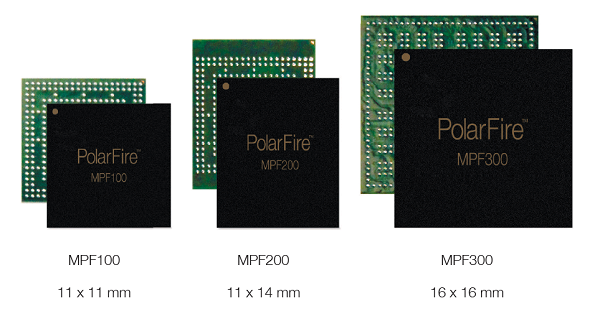This column is intended for those who have trouble with space when mounting an FPGA on a printed circuit board.
I would like to introduce [space saving], which is a feature of Microchip FPGA.
Space saving
"SRAM-based" and "Flash-based" FPGAs
Many of the currently popular FPGAs (Field Programmable Gate Arrays) are SRAM-based. Microchip primarily offers 'Flash-based' FPGAs.
Even with the same FPGA, there are various differences in features between "SRAM-based" and "Flash-based".
As introduced on several related sites, the following major feature differences can be seen when comparing "SRAM-based" and "Flash-based" FPGAs.
◇SRAM-based FPGA:
When the power is turned off, the written data is erased.
◇Flash-based FPGA:
The written data is not erased even when the power is turned off.
Boot ROM
SRAM-based FPGAs generally require a "configuration ROM" for booting, but Flash-based FPGAs do not require a booting ROM and are also called "non-volatile FPGAs".
Therefore, Microchip's FPGA can review the mounting space that was previously allocated to ROM. Figure 1 shows the board mounting image for each case.

Space saving package
When selecting an FPGA, the balance between supported logic scale (number of LEs), number of I/Os, and package size is a very important point.
In particular, when mounting FPGAs on boards with extremely strict space constraints, there is likely to be a large demand for FPGAs in space-saving packages that maintain a certain level of logic scale, as well as reducing configuration ROMs.
Microchip's PolarFire™ nonvolatile FPGAs are capable of using 100K, 200K and 300K logic elements in small packages while maintaining mid-range performance on scales of 100 to 500K logic elements. increase.
Figure 2 shows the package image.
In particular, in machine vision camera applications, peripheral components such as image sensors, FPGAs, and SDRAMs must be mounted on extremely small boards, so PolarFire™ is ideal for realizing those applications. It can be said that it is a key part of

Power sequence circuit
In the case of SRAM-based FPGAs, the problem of in-rush current that accompanies the application of power has been raised, and the current value is on the rise as the manufacturing process becomes finer.
A finer SRAM-based FPGA requires power-on and power-off following the power sequence for cores and I/O specified in advance by the manufacturer. Therefore, it is necessary to implement sequence circuits using CPLDs (Complex Programmable Logic Devices) and discrete components.
On the other hand, in the case of Microchip's Flash-based FPGA, the manufacturer does not specify the power supply sequence in terms of inrush current. Therefore, the space for the power sequence circuit can be reduced.
Summary
As mentioned above, by using Flash-based FPGA, it is possible to shrink the board size and further miniaturize the device itself.
In addition to the space advantage, there are the following three advantages.
1) Cost reduction <expensive configuration ROM>
2) Reduction of man-hours <Compatible with discontinuation of configuration ROM>
3) Reduction of man-hours <response to configuration errors>
